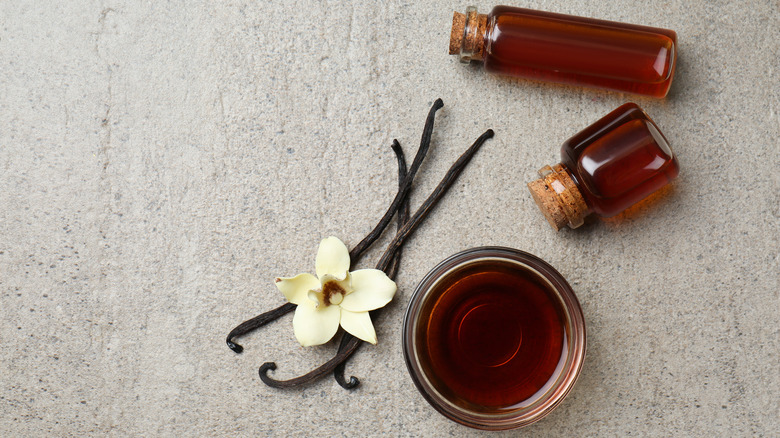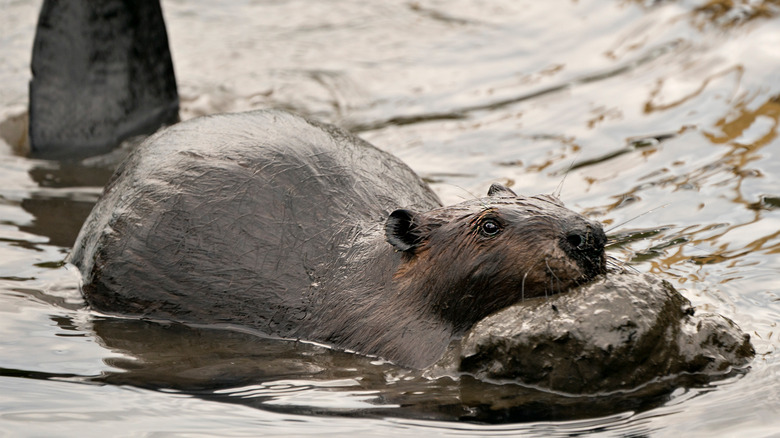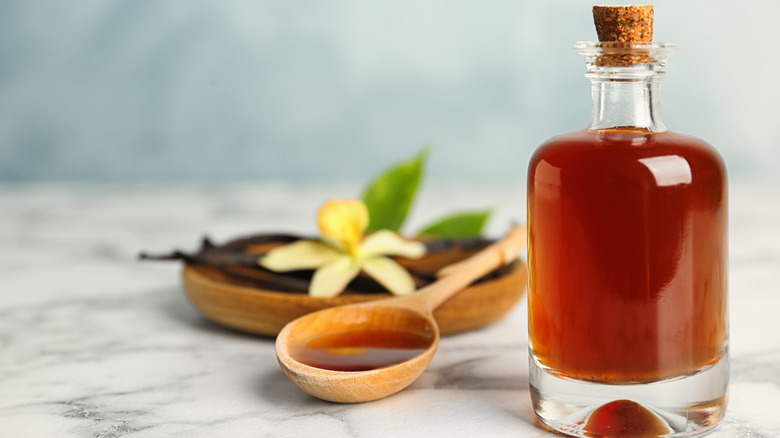The Imitation Vanilla Myth You Shouldn't Worry About
In 2011, celebrity chef Jamie Oliver made an appearance on "Late Show with David Letterman," where he dropped a shocking bombshell. Vanilla ice cream, he claimed, is flavored not with real vanilla beans, but rather with the anal glands of beavers. This news sent the internet into a frenzy. Vegans feared that they'd been duped into eating an animal product, while everybody else panicked because ... well, it's beaver butt for goodness' sake!
After reading that, you might want to dump your desserts down the drain, but let's pause and check the facts. Jamie Oliver is no stranger to controversy, and it turns out this is just one more occasion when he was way off the mark. According to National Geographic, beavers secrete a thick, sticky compound called castoreum that just so happens to smell like vanilla, but contrary to what Oliver claimed, it is not produced by the beaver's anal glands. Instead, castoreum comes from specialized glands called castor sacs. While these aren't anal glands, they are located very close to the beaver's anus, and castoreum does sometimes contain traces of urine and anal secretions. Gross, we know, but it's not as bad as it sounds.
The U.S. Food & Drug Administration lists castoreum as being "generally recognized as safe," meaning that it can technically be used in food. However, this almost never happens. Castoreum is difficult and expensive to obtain, and there are much more efficient ways to simulate vanilla. It's unlikely that you ever have, or ever will, eat castoreum, but you might encounter it elsewhere.
What is castoreum, and what is really used for?
Castoreum serves a very important purpose in a beaver's life. Mental Floss explains that both sexes produce the substance, and use it both to mark their territory and to coat their fur for waterproofing. When harvested, fresh castoreum is a yellowish liquid with a consistency akin to molasses, but it can also be dried to a solid form.
Humans have used castoreum for centuries often for medical purposes, and found it particularly useful for treating headaches, as it contains some salicylic acid, which is a key ingredient in aspirin, but it wasn't until the early 1900s that people started experimenting with castoreum as a food additive.
According to Vice, castoreum was a fairly popular flavoring agent in the '60s and '70s, used to simulate strawberry and raspberry in addition to vanilla. However, in the '80s, castoreum use dropped dramatically. This had nothing to do with safety concerns; research has shown that castoreum is totally non-toxic to humans. The reason that castoreum fell out of fashion was all about profit.
First of all, castoreum isn't easy to acquire. The beaver must be sedated and "milked" — you can imagine how popular that job is. Secondly, advancements in synthetic flavoring created a much easier means of simulating vanilla. And finally, castoreum is neither kosher nor vegan, eliminating a sizable consumer base. Simply put, castoreum isn't profitable for food manufacturers. As a result, today, castoreum is mainly used in a different industry: perfume.
Most vanilla extract is artificial, but it isn't made from castoreum
You shouldn't worry about beaver secretions in your food. To drive that point home, the Vegetarian Research Group contacted five major manufacturers of vanilla extract in 2011 to ask about castoreum, and all five replied that they do not use the goop at all. However, these companies probably aren't using real vanilla either.
According to Bon Appétit, a whopping 99% of the world's vanilla extract is artificial. That's because real vanilla beans are only grown in a few regions — 80% of it coming from Madagascar — and harvesting them is incredibly labor-intensive. Vanilla is actually the second-most expensive spice in the world behind saffron, costing roughly $270 per pound.
So, if the vanilla extract in your pantry isn't made from vanilla beans, and it isn't made from castoreum, what is it made from? Most artificial vanilla products are derived from guaiacol, a chemical found in wood smoke and cloves. Through a chemical reaction, guaiacol can be turned into vanillin, the chemical that gives vanilla its flavor. Vanillin can also be synthesized from lignin, which is the primary component of wood. A beaver's diet is composed largely of wood and bark, which means imitation vanilla is much closer to the stuff that goes in a beaver's mouth than the stuff that comes out the other end.


